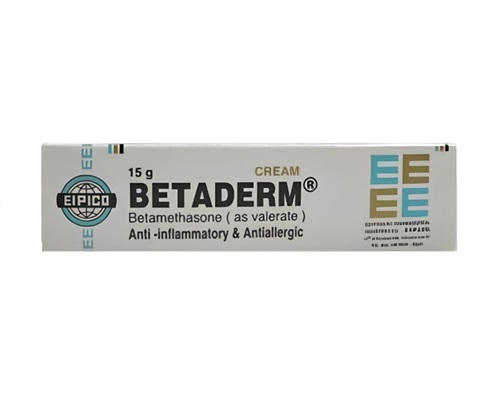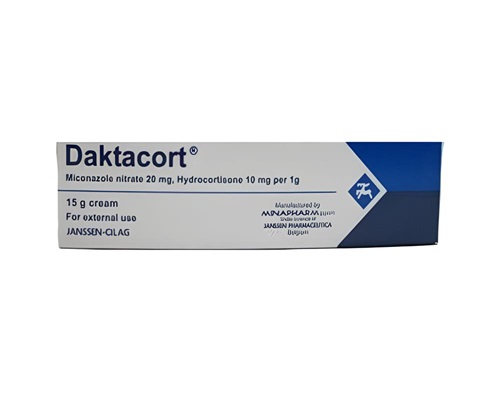Description
Trade name:
Betaderm
Compound:
Every 100 g of cream contains:
Betamethasone 0.1 g
Auxiliary components:
Catosterol, sodium lauryl sulfate, white soft paraffin, sodium phosphate monobasic, chlorocresol, propylene glycol, purified water, liquid paraffin.
Properties:
Betamethasone is a synthetic fluorinated corticosteroid for use in dermatology and has a strong anti-inflammatory, antipruritic and vasoconstrictive effect. The mechanism of anti-inflammatory action of betamethasone is not fully understood. It is generally accepted that this drug reduces inflammatory processes by inhibiting the production of prostaglandins and leukotrienes due to inhibition of phospholipase A2 activity and a decrease in the release of arachidonic acid from phospholipids of cell membranes. As a result, hyperemia and exudation in the lesion are reduced.
Indications:
For the treatment of skin diseases that respond to GCS therapy, in the presence of a secondary bacterial infection or the likelihood of its development:
-eczema;
-atopic dermatitis;
– neurodermatitis;
– contact dermatitis (including professional);
– allergic dermatitis;
-psoriasis;
– lichen planus;
-seborrheic dermatitis;
-exfoliative dermatitis;
-radiation dermatitis.
Infected dermatitis resulting from insect bites, scabies and diaper rash.
Method of administration and dosage:
The drug is used externally.
The cream is applied to the affected area of skin in a thin layer, rubbing in lightly, 1-2 times a day. On areas with thicker skin (e.g. elbows, palms, feet), as well as places from which the preparation is easily rubbed off, the preparation can be applied more often, but not more than 4 times a day.
The required frequency of application should be determined by the doctor, based on the severity of the disease. In mild cases, application once a day is usually sufficient, while more severe lesions may require more frequent application.
The duration of treatment depends on the severity, location of the lesion and the patient’s response to treatment. In the treatment of chronic diseases, therapy should be continued for 3-7 days after all symptoms have disappeared. The duration of treatment should not exceed 2-4 weeks.
Contraindications:
Hypersensitivity to betamethasone, or to any of the excipients of the drug, or to glucocorticoids;
-chicken pox;
-fungal skin diseases;
– viral skin infections (herpes simplex, shingles);
-open wounds;
– acne, rosacea;
-perioral dermatitis;
-skin atrophy;
-perianal and genital itching;
pregnancy (long-term treatment of large areas of skin);
Precautions:
If signs of hypersensitivity or skin irritation occur during use of the drug, the patient should stop treatment and consult a doctor.
Side effects:
From the skin and subcutaneous tissues: burning, itching, irritation, dry skin, folliculitis, hypertrichosis, steroid acne, hypopigmentation, perioral dermatitis, allergic contact dermatitis, telangiectasia, skin maceration, skin atrophy, stretch marks, miliaria, secondary skin infections, pigmentation changes, hair depigmentation. Rash, itching, swelling, erythema and other signs of skin irritation.
Storage method:
Store in a cool, dry place at a temperature not exceeding 30 degrees.









